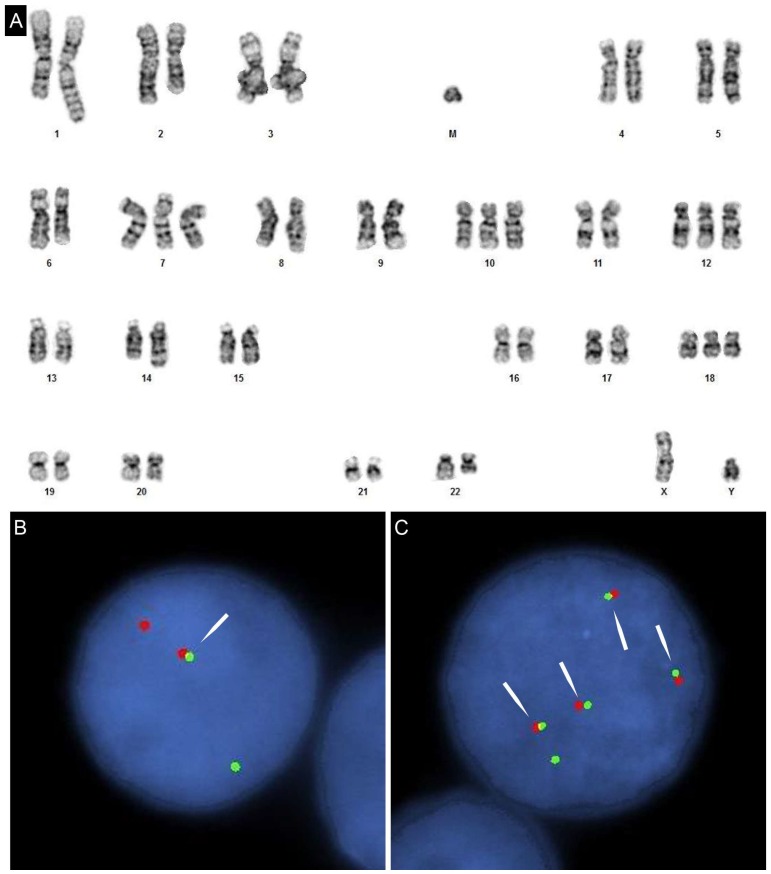Figure 2.
(A) Karyotype of DHL with c-MYC/IGL and BCL2/IGH rearrangements. Clonal evolution related triplication of the derivative (18) t(14;18) highlights the complex additional alterations; (B) fluorescent in-situ hybridization (FISH) targeting c-MYC using a flanking break-apart probe set. Fusion (arrow) represents the normal locus. The separated red and green signals indicate c-MYC rearrangement; (C) Dual fusion FISH targeting immunoglobin heave chain (IGH) (green) and BCL2 (red). One fusion signal represents derivative 14 and the remaining three fusions signals are the oncogenic 18 derivatives (arrows). Absence of a normal 18 (an isolated red signal) agrees with the karyotype and is likely due to mitotic recombination-based evolution, transferring the fusion site to the original normal homolog, in addition to the more common nondisjunction-based duplication for the third derivative in this etiology.

